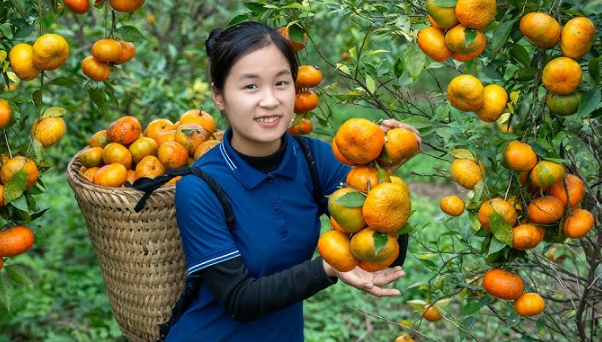AMAZING NEW TANGERINE CULTIVATION TECHNIQUES IN HARVESTING 
Hola a Todos Bienvenidos ami Canal..aquí les traigo otro Video..Cosecha de mandarina por contrato en Estados Unidos SUSCRIBETE a este canal para más contenido …. deja tu “LIKE” Activa la campanita para que no te pierdas de ningún video !!!! Yucuquimi De Ocampo Huajuapan de Leon Oaxaca Trabajos Temporales en USA Trabajando con visa h2a en usa #agriculture #amazing #tangerines #agronomia #subscribe #fypシ

Amazing New Tangerine Cultivation Techniques in Harvesting
In recent years, innovative techniques in tangerine cultivation have dramatically improved both the yield and quality of crops. Farmers who have adopted these methods report higher success rates, making them more competitive in the global market. These new approaches are primarily centered around advanced farming practices, modern technologies, and a more sustainable use of resources. One of the most significant developments has been the integration of precision agriculture. Using sensors, drones, and satellite technology, farmers can now monitor soil health, water usage, and crop growth with a level of precision that was once impossible.
For instance, smart irrigation systems have become a game-changer, helping farmers conserve water while ensuring that their tangerine orchards receive just the right amount of moisture. These systems adjust water levels in real-time, based on weather forecasts and soil moisture content. Additionally, the use of organic fertilizers and eco-friendly pesticides has reduced the reliance on chemical inputs, contributing to healthier crops and reducing environmental impact.
The success of these new techniques is also reflected in the financial outcomes for farmers. The increased efficiency of operations means that farmers spend less on water, labor, and fertilizers, while reaping higher yields. The average size and quality of the tangerines have improved, leading to better market prices. This has translated to more profitable harvests, enabling farmers to reinvest in their operations, expand their orchards, and improve their livelihoods.
Spending Budget and Release Date for Farmers
For farmers looking to adopt these new tangerine cultivation techniques, the financial aspect is a critical consideration. Initially, there may be some upfront costs associated with purchasing the necessary equipment, such as sensors, drones, and smart irrigation systems. However, these costs are quickly offset by the long-term savings and increased revenues that come from more efficient practices. Many governments and agricultural organizations have recognized the importance of supporting sustainable farming practices, and some offer grants or subsidies to help farmers cover the costs of these technologies.
The release of funding or budget allocations often coincides with planting or harvesting seasons, so farmers can time their investments strategically. Typically, government subsidies or financial support for new agricultural techniques are released in the early spring or late fall, when farmers are preparing for the upcoming season. These funds provide farmers with the necessary capital to invest in high-tech equipment and infrastructure, which in turn ensures a higher return on investment when harvest time arrives.
Availability of Farm Sites for Farmers
As the demand for tangerines increases globally, finding suitable farm sites for cultivation has become a key concern. While some regions have ideal climates and soil conditions for growing tangerines, others are adapting through improved soil management and climate control techniques. Farmers looking to expand or relocate their operations now have access to new farming sites in areas that were previously considered unsuitable. Many agricultural extension services offer consultations on the best locations for tangerine farming, taking into account factors such as local climate, soil quality, and access to water sources.
The availability of land is crucial for sustaining the growth of tangerine cultivation. Farmers are now more informed about the potential of various land types and the steps required to optimize those sites for tangerine production. Whether it’s through new land reclamation techniques or improving the soil’s fertility with organic amendments, farmers have more options than ever to find the right land for their orchards. This, in turn, leads to an expansion of tangerine farming, creating more opportunities for both local and global markets.




